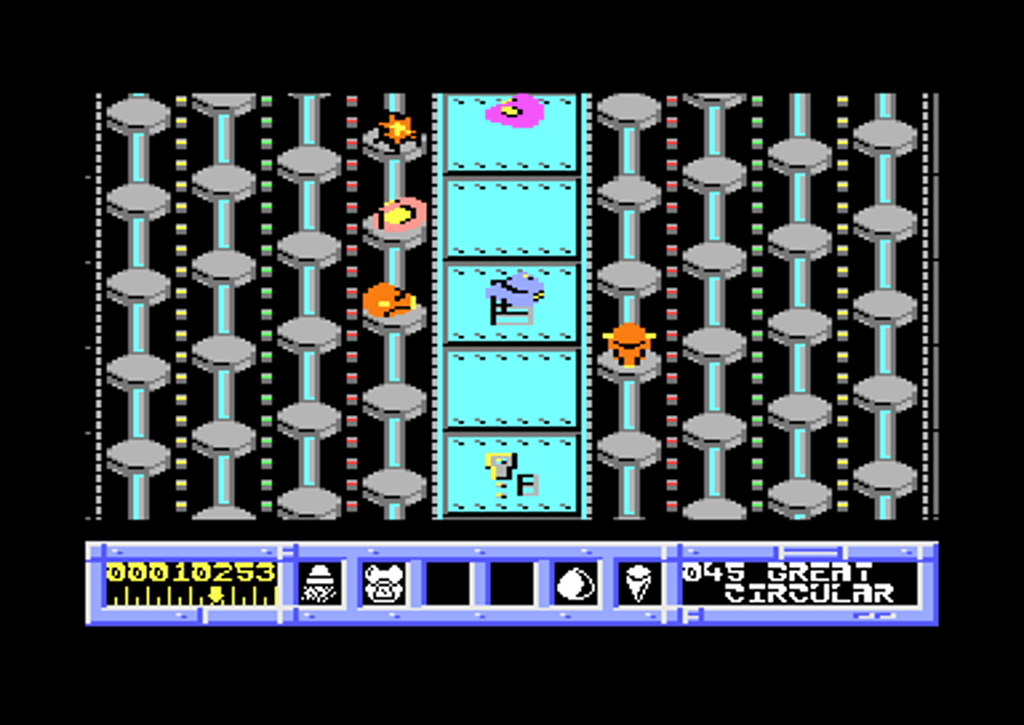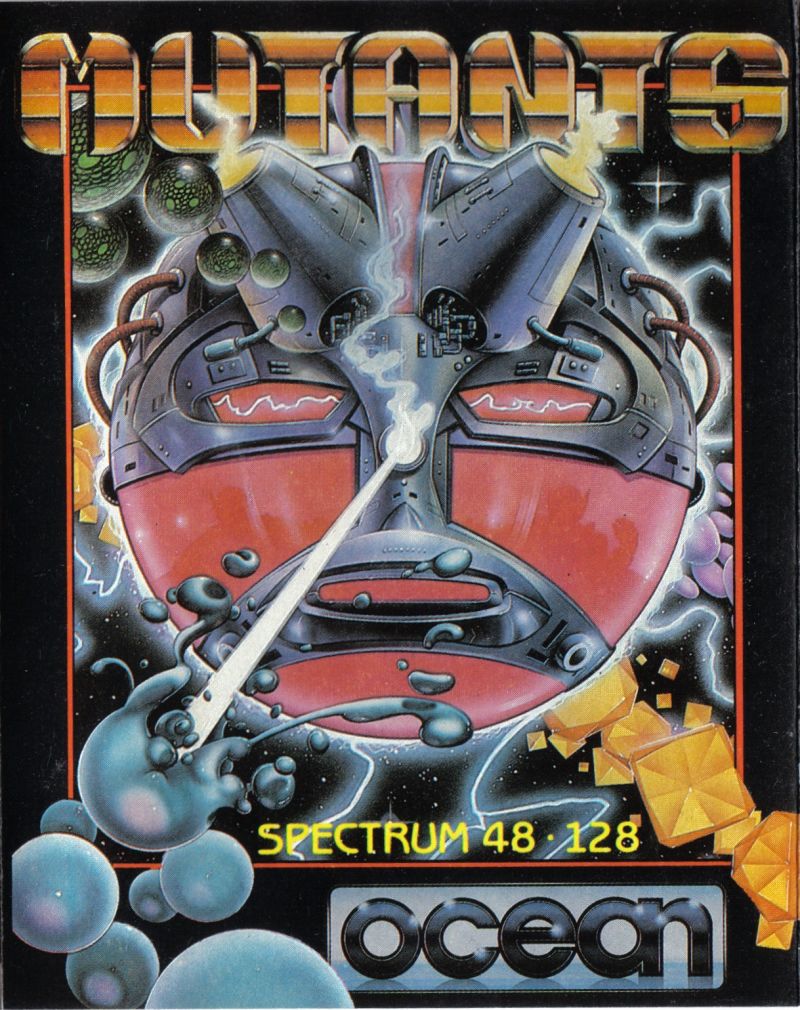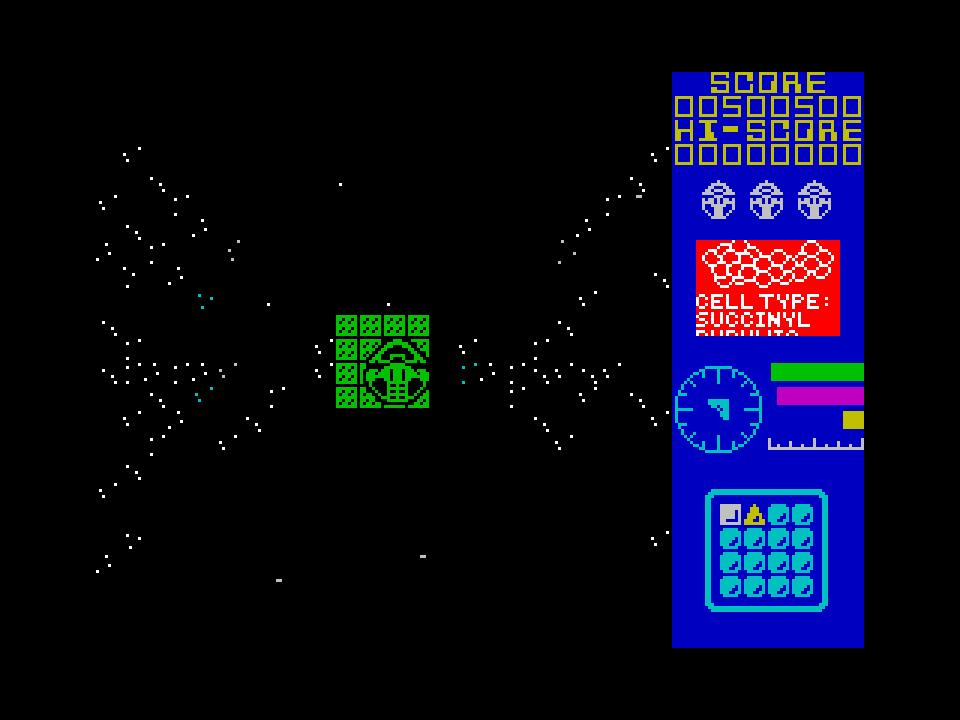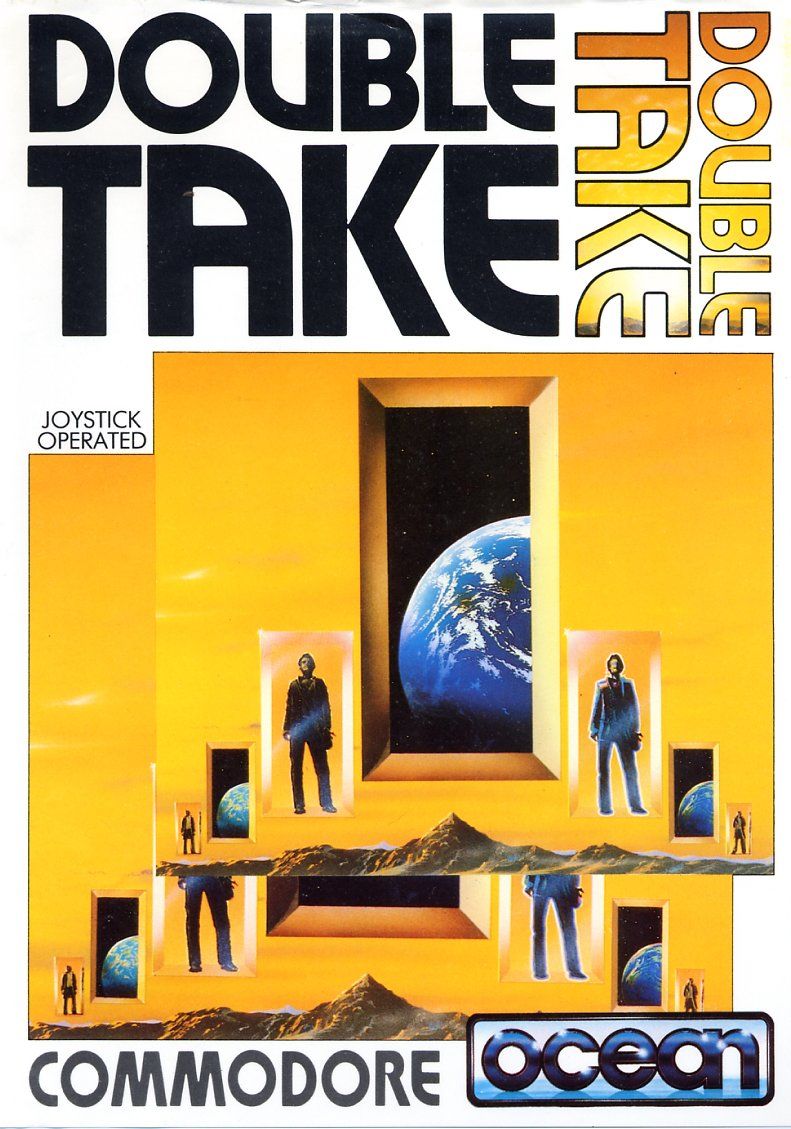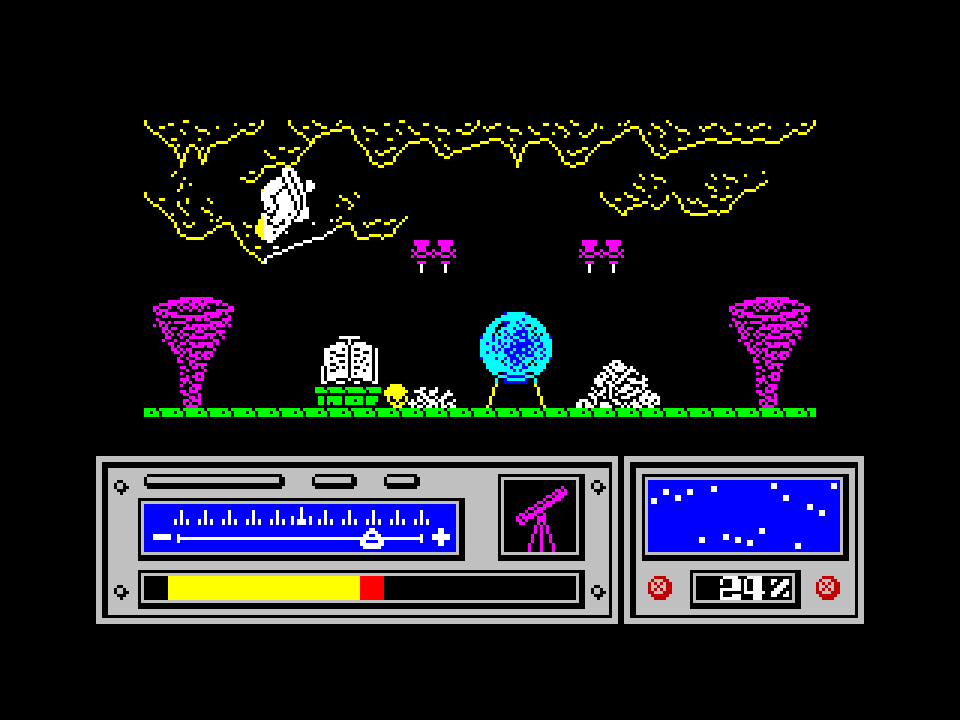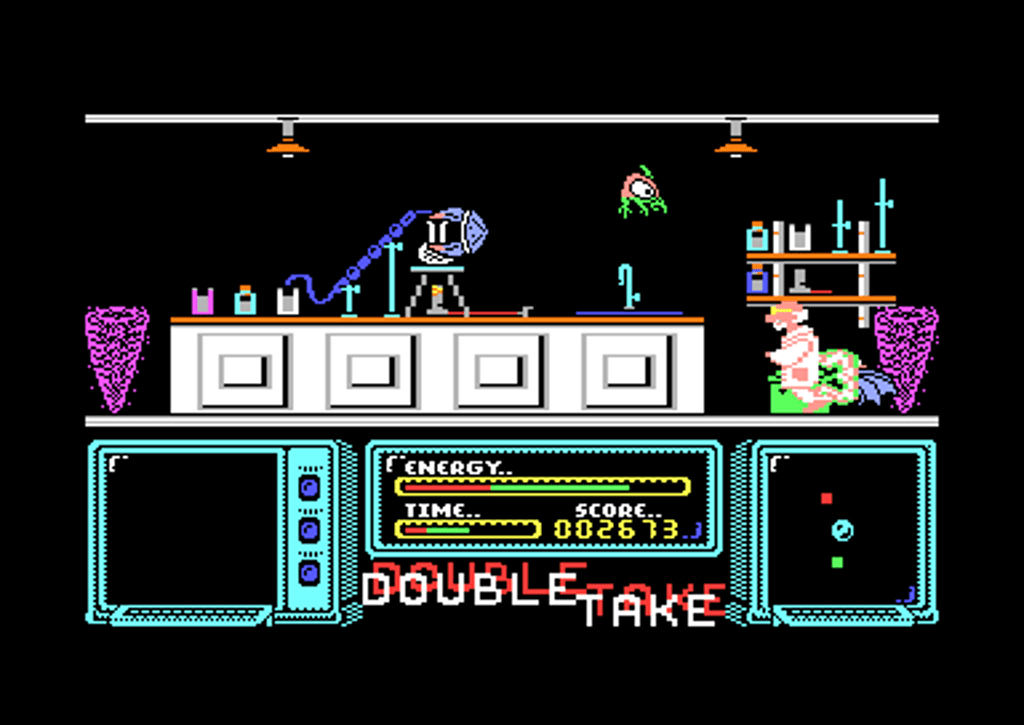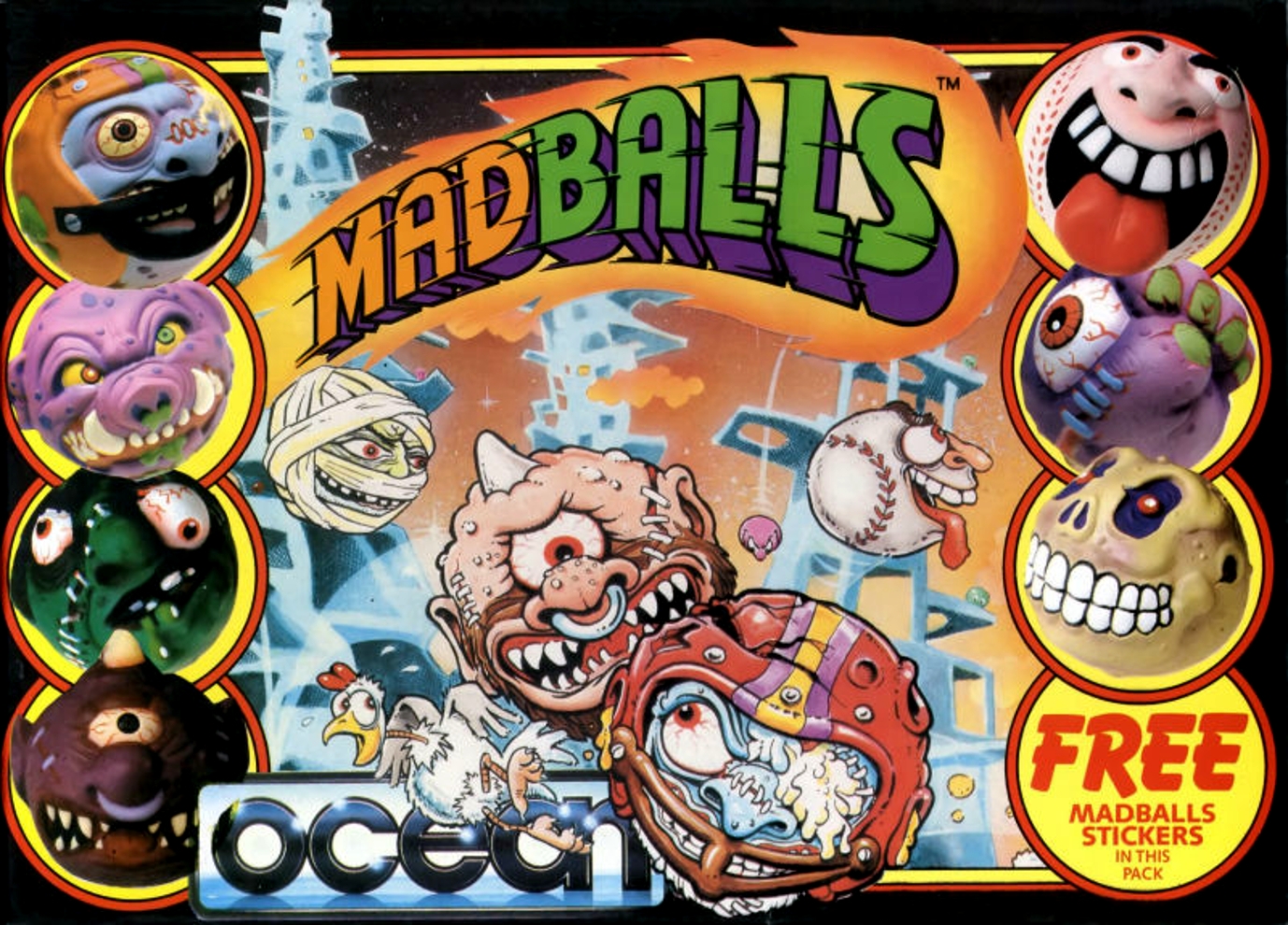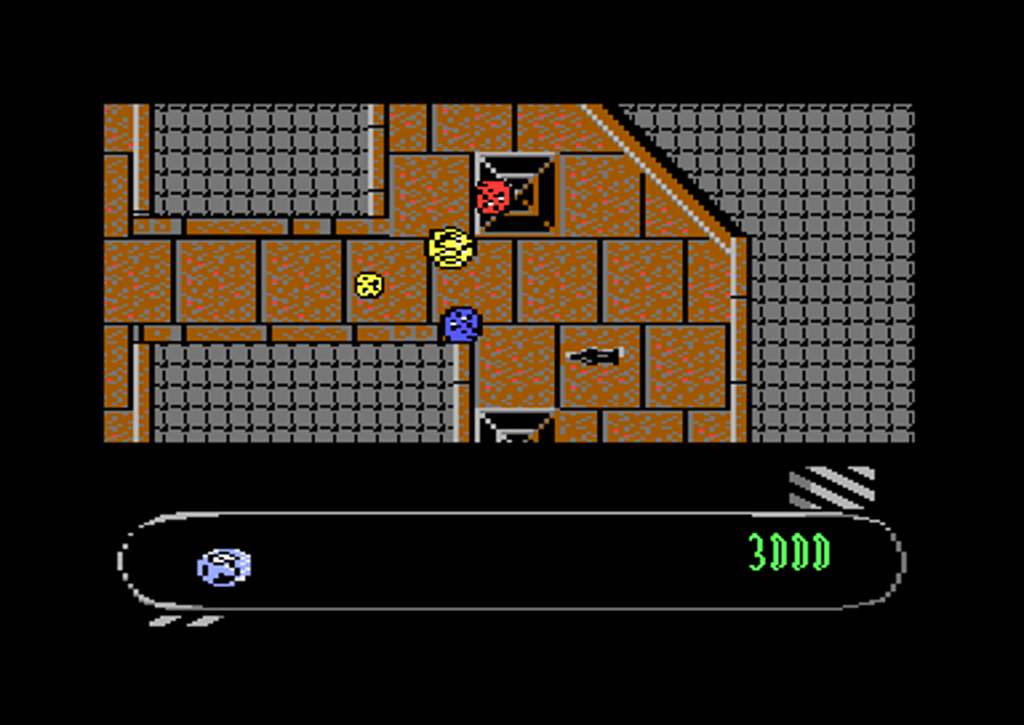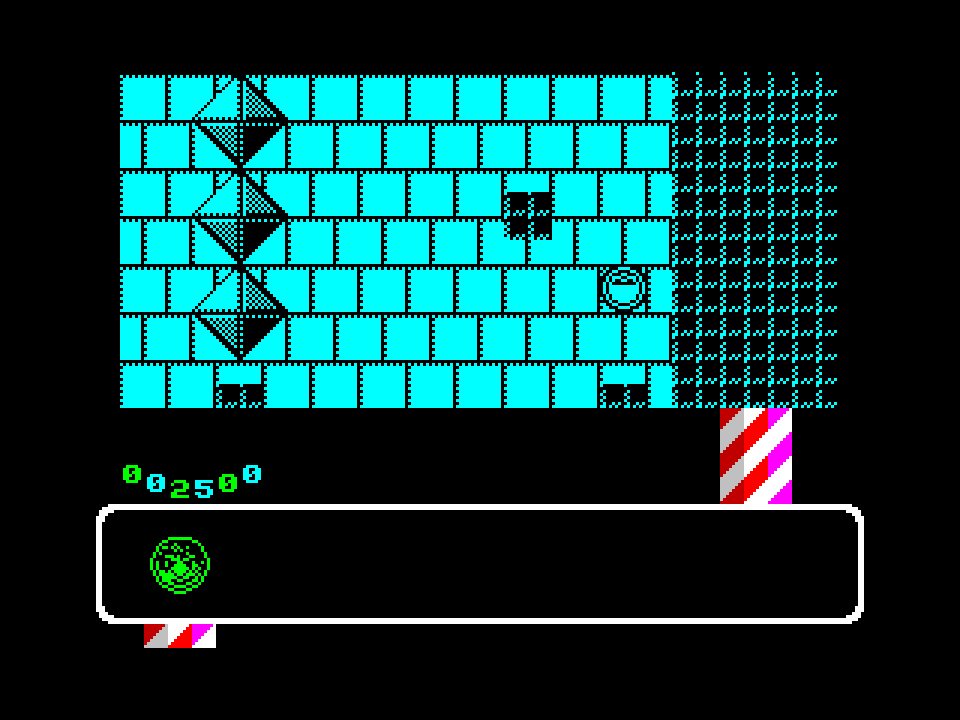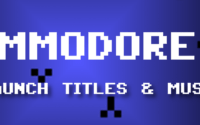Art For The Machines: Part IV – What Next?
Infodroid (Beyond) – What is an Infodroid? The simplest explanation is that it’s a Droid that deals with information in various ways. And they operate in the future… As more and more of the information got more and more sensitive and relied on secure administration, an effective and literal information highway was constructed on a strategically chosen planet to be able to quickly shift the valuable electronic parcels to wherever they needed to be – Safe and in time. 90% of all information was delivered electronically, but the rest, the really sensitive stuff, moved via this system.
Multiple actors wanted in on the action as there was big bucks to make, and the company that has its eyes on you is no exception. However, not everybody out there is a “good and trustworthy info dealer”. There has been frequent reports of greedy business practices, info that various shady dealers wanted to keep for themselves, info that “accidentally” was lost and ended up in the wrong hands, and downright illegal activities. So the united and lawful organizations decided that something needed to be done since too much was at stake. Enter the Droid Dispatch Company NLC that has developed and constructed a Droid ready for hard action – One that can guarantee that the information it distributes is in good hands. The DDC has now hired you as an Infodroid operator and thereby “agreed to grant you a Droid Dispatch Operator Licence” plus some Credits to get started.
The very first screen that you see in Infodroid is the windows-based menu that displays: Your Droid inside a wireframe-graphics cube / transparent die, eight icons (at a time) in a 3×3 grid (The middle one is “nothing”, i.e., when no icon is highlighted.), and two windows for stats and information. A narrow horizontal strip at the bottom of the screen shows your Credits, energy, and six slots for different Droid parts.
First of all, you get your “starting capital for new business” plus a Droid. (Just select any icon here. You get 8.000 Credits to begin with.) Moving the Joystick in any of the eight directions highlights one of the icons in the current menu in the top left window. Pressing the Fire-button is for confirming an option / icon. Holding Fire pressed with “nothing” selected and moving the Joystick left, right, up, or down rotates the wireframe-graphics cube. Each face has a different set of icons. This die is the Infodroid Interface (The cube and the icons is a design choice – Totally fit for a Denton Designs game!), which has two “Parts Condition Displays” (Two sides of the cube.), an “Item Destination Display”, a “Music Room”, and the menu where you select the first causeway a.k.a. “Ring” you’ll move along. The Music Room includes four Fred Gray tracks – Chop Suey, Robo A Gogo, Dance Of The Droids, and If Who Dares. (You always need some good music when you’re on the move! And what’s better than classic Gray?) You can also select to play the game with sound effects. (But not both.)
To check what parts the Droid is fitted with (And to fit new parts.), you move to the Parts Condition Displays. The middle left and right icons are left and right arrows, which are used to select any of the six parts with. (They are highlighted accordingly.) To fit a part in any slot, select the icon and press Fire. Easy. The default equipment is: Fuel, Forward Thruster, Automatic Platform Alignment System (A.P.A.S), Automatic Platform Centering System (A.P.C.S.), Gyro Rotator, Navigation Device, Standard Shield, and Standard Penetrator. (The A.P.A.S. and A.P.C.S. units simply allow you to move physically – “Aligning” and “centering” on the causeways.) There is an additional icon for “Combined Thruster Display” that shows all your Thrusters in one slot.
And once you have checked that your gear is operational, you have to get down to business and hit the info highway network to your first assignment. You enter by selecting one of the icons on the “information highway”-menu and pressing Fire. Likewise, you exit the network via ellipse-shaped elevators on the causeways. The road network is built from fourteen long vertical stretches (256 segments in each, i.e., you jump one segment at a time.) with a central lane and eight moving “conveyor belts” (Disc-shaped platforms linked together.) that run in both directions at different speeds. So to move faster in either direction, your Droid has to skip to the preferred lanes. The main dangers that ruin shit any day are the pirate Droids that not only try to kill you, but also steal your valuable info.
Your Droid can be equipped with eleven different parts through the Infodroid Interface. The icons at the bottom of the screen shows the color-coded status of your equipment. White means that the equipment is okay, and red means that it’s busted but not fucked beyond repair. (The colors cycles from white to cyan to purple to blue to red. Red also indicates that a part isn’t fitted.) The Navigation Device shows where you are, e.g., “Tsang Radial” followed by the segment / unit number.
And out on the causeways, you have to avoid colliding with other bad Droids as far as it’s possible. It’s like constantly jumping around in a maze with invisible walls. (Some of the highways have dead ends instead of warp zones, so you’ll plummet into nothing if you don’t get to the opposite moving lanes fast enough! But there are warning signs on the middle lane.) The middle lane has all these icons for gas stations, corporations, junctions, etc. All of them are accessed via the aforementioned elevators. Every collision drains energy, and if your Droid gets destroyed, you’re sent back to the Infodroid Interface where you have to purchase a new one. (A Replacement Droid costs 3500.)
The Fire-button and Down on the Joystick takes any elevator into the underground. The “Junction Rooms” link the highways together. (Simply use the Interface to exit to another one by flipping to a new side of the cube.) Collection Points at “Company Shipping Rooms” provide access to the parcels. These icons look like letters, and when a parcel is selected, the recipient, its address, and the parcel’s value is displayed, e.g., Titan Haulage Company, 020 Gamma Arc, and 336 Credits. The Infodroid Interface is also logically used for delivering parcels at Delivery Points. And the Sparktronic Infodroid Service Centers provide recharges / repairs and part replacements. (Buying and selling used parts is also possible, but that always comes with a risk.) When you can’t buy another Replacement Droid, you can’t do your job and are declared bankrupt. The game ends by summarizing how many deliveries you have made, plus your total income.
To be able to survive on the more dangerous roads, you need special parts for the Droid. And dangerous highways “happen” to be the road to the bigger bucks. The special parts include Directional Valves (Which improve jumping – Sideways and back. A standard Droid has to turn around to be able to jump.), Boosters (A standard Droid can only jump one step / one lane. Boosters grant longer and more effective jumps.), and Shields. (There are three different ones – Electric, Photon, and Atomic. But some of the Pirates have Shield Penetration Elements. (Of course they have.) So you can never be 100% safe.) Weight is also an issue as you can only carry so many parcels at a time.
Infodroid is a thoroughly well-designed game (It’s not like the Dentons are spoiling us, eh?) that may not look like much if you merely exit to the highway, move around for a bit, and get killed… But if you spend some time learning the system’s interface and the physical aspects of the navigation in the game, you will most likely notice that there is way more beyond the hypnotizing scrolling of the causeways. This isn’t just a graphical effect (Although it’s lovely.), but the lanes prove extremely useful when you need to move from point to point without having to repair or lose your Droids every other five minutes.
Information-based administration is a sweat-inducing and hard deal, but once you have successfully delivered your first parcels and collected your Credits, the addiction might kick in. And with four varied and really good in-game tunes by a true master composer, everything just gets so much better.
The loading screen is another stylish Stoo – It shows the Droid on one of the causeways next to the business lane. Both the programmer and the second graphics artist are uncredited in the game, but yet another pretty good guess would be Dave Colclough and Ally Noble respectively. — Release: Winter / Late (December) 1986 · Credits: Stuart James Fotheringham, Fred Gray · Commodore 64 (Cassette / Disk)
Note: Infodroid was released for the Amstrad CPC, but not for the ZX Spectrum, which was quite an interesting choice. Weren’t there any Speccy-based devs around who could have ported it? (Although one would guess that the smooth scrolling screen-routines at different speeds could have been a nightmare to get right.)
Mutants (Ocean) – Mankind didn’t get much smarter throughout history even with the hindsight being damn close to 20/20 – That much is pretty certain. (And we are hopefully still talking about video games and not the real world.) Because since and throughout the thousand years of the second Millennium, the sources for conflicts and the outcome has pretty much always been the same – Bloody war with endless casualties. And in the future, entire star systems are involved in the shit show of shit shows called the “Inter-stellar War”, which has lasted for six centuries at this point. Or it’s simply Commodore and Sinclair vs. Microsoft and Apple.
Anyway. Now, the Survivor Zero Corporation has cracked the brilliant idea to use Macro-Genetic Mutoids in order to get the upper hand in the war and hoping that it will be the end of it. And it sure looks like it could be the end, because these MGMs are mutated viruses and bacteria that have the potential to wipe out more than anybody (Save for some utter megalomaniac.) bargained for – Like every living being in the known universe…!
You are a part of very small unit that has decided that enough is fuckin’ enough. You jump into your solo-flyer’s space craft called the “Rainbow Warrior” and head for the test zones that contain the various quite feisty viruses. There are fifteen of them – All of them lethal. What you have to do, is to before every confrontation choose between three different weapons that are known to be somewhat effective against the organisms. “Somewhat” within gigantic quotation marks, because firing at a cloud of bacteria is like fighting a downpour with an upwards pointing home made flamethrower, i.e., it might only be effective right where you stand for a fragment of a second. The thing is that you also need to collect fifteen pieces for a unit that is used to cause the entire system to self destruct and wipe out the viruses. These pieces have to be transported to a maze-like Control Zone where they are assembled. Here is the plot twist: You can only carry one piece at a time. And if you thought: “It’s a good thing we spread out the components in the test zones, because nobody would be fucking stupid enough to go through the suicidal hassle of retrieving all of them!”, you shared the exact same thought with the Survivor Zero Corporation. Because they sure took precautions. This is probably Plan B to begin with.
The main menu shows the Rainbow Warrior inside the telebeam-gate. With the help of an arrow, you choose between music and sound effects. (Fred Gray’s C64-music is absolutely fantastic and should never be turned off…!) And you select between the three different weapons – Missiles, Barriers, and Photon Torpedoes. The missiles have a good blast radius but a pretty slow fire-rate (One missile at a time.) while the Photon Torpedoes are rapid-firing, but not as strong. The Barriers are circular items that form a line behind the ship when the Fire-button is held down. These temporarily halt (Or contain if you draw a square around them.) some of the viruses. (Like the Glycosidic Albuminide and Succinyl Pyruvic.) You only have a limited supply of Barriers, and once you run out, the Rainbow Warrior reverts to the Photon Torpedos.
Now, it’s time for action. Click the “Rainbow Warrior”-icon, and you get to select which one of the quadrangular multi-directional scrolling top down view virus zones to enter. One swift telebeam-ride later, and you’re on a safety pad and have immediate visual contact with the specific virus that is kept in that particular zone. The viruses behave quite differently, but all of them attack you as soon as you show up. (You’re invulnerable on the pad, and you can always zap out of there at any moment.) The Torpedos and Missiles are only so effective, so you need to move all the time as you’re often chased around the confined space. And in these spaces, you don’t want to get cornered. Once you have found and collected the piece to the self-destruction unit, you have to fly back to the pad and telebeam to safety.
Also, after collecting a piece, you have the choice to enter a new zone or deposit the piece on another pad in the Control Zone. Here, you have to navigate around the corridors without touching one single pixel of the walls. Or it’s adiós self-destruction unit piece and minus one life. Successful deposits award you up to three extra lives. (Which are always needed. Those initial four can go in a couple of seconds if you selected the wrong weapon and hang around and chill with the viruses swarming around you.) Once you have, against pretty slim odds, managed to take all the fifteen components to the assembly point in the Control Zone, the game, reportedly, starts over on a harder level. (And who knows how many of these “New Game+” there are?)
The overall design is one of the strong points of Mutants. No big surprise there. That main menu looks smashing and is instantly memorable, and the space looks sufficiently cold and empty. (With stars far, far away in the background.) The aggressive forms of infection are visualized as different patterns, trailing lines, and moving spheres in different colors and sizes. It makes the organisms look both sentient and mechanic at the same time. You really feel that they are out to destroy and not give a shit. Each zone is placed in a sort of infinite loop where you always can see to the opposite side of the zone by the walls, i.e., the top wall is also the bottom one and the right wall is the left wall. This is a visual thing since you obviously can’t fly through the walls. But you can, for example, spot the destruction-unit component on the other side a wall and easily figure out where the component actually is. (The lower left corner on the other side equals the top right corner in the zone.)
The score-, Hi-score, and life counter panel in the top left corner even shows the Mutoids’ scientific name and molecular structure. The second panel in the lower right corner shows which pieces you are carrying and haven’t collected plus the ones you have managed to take to the Control Zone. (The 4×4 grid of icons represent the zones.) Your shield power, energy, and the mutant colony’s size / energy level are shows as green, red, and blue bars. A compass points you in the direction of the colony. (The Spectrum version has all the info in one side panel on the screen’s right side.)
Mark Jones and Sean Pearce (Who both worked on other games by Imagine Software and Ocean.) ported Mutants for the ZX Spectrum, meaning that the conversion was outsourced to Choice Software. While it’s a solid port, it’s hard to come up with any reasons why anybody would prefer it over the C64 one in this day and age. Because the latter has very smooth scrolling (Instead of “pixel-jumping”.) and Fred Gray’s melodic and phenomenally ethereal soundtrack. (The Spectrum 128K version has a more raucous version of the main theme, although it’s shorter and cuts out the last past.) It’s just a smoother ride. But not in the least easy or easier. Still, once you figure out which weapons to use and how, you should at least be getting somewhere. It’s a deliriously good-looking and hypnotic nightmare regardless. — Release: Spring (March) 1987 · Credits: (C64) Stuart James Fotheringham, Fred Gray / (ZX) Mark R. Jones, Sean Pearce · Commodore 64 (Cassette) / ZX Spectrum 48K/128K (Cassette)
Note: Mutants was also released for the Amstrad CPC. On the Spectrum, this was the first Denton-related game that got an enhanced version for those who owned a 128K machine. It’s not like you had to ask for it specifically in the stores – You simply bought Mutants on cassette. (No disk version was released.) Side 1 of the tape had the 48K-version and Side 2 held the 128K one. And like in many (most) cases, the difference between the versions were often noticeable in the sound department.
Double Take (Ocean) – It’s more or less impossible to keep from wondering about certain and very specific details in Double Take. There aren’t that many of these details, but some of them are puzzling to the point of being mildly distracting. And this applies to both the C64- and the Spectrum-version – In slightly different ways. It’s almost like the game’s theme rubbed off on the software itself… It’s all about two vastly different, polar worlds that just must not meet in the same dimension without everybody and everything facing dire and catastrophic consequences… I am of course still drawing parallels between two 8-bit gaming platforms, but through an (admittedly) far-fetched parable, it happens to fit the background scenario for Double Take.
It all happened in 2008. (80s future.) An experiment with a “Physical Particle Investigation Unit” caused a chain reaction – Propelled by its accelerator. And what do you know? One moment, you are researching anti-matter in a chilled fashion and in the next one, a gateway has opened to a parallel universe via the sixth dimension.
Some “thing” on the other side saw its once in a lifetime chance to invade our world. The instruction manual calls this something Sumink, but it could have just been an unknown entity to maintain the mystery. And then, you discover that the stability between the two opposite universes starts to crack. Gravity is affected as well as all the physical dimensions. Objects switch places and a vortex creates two-way gateways between the worlds. So there is this plus- and a minus world. (Some would call them good and evil.) And this instability is bad enough news so that it must be restored. This is done by taking the objects back to where they belong. And in the real world, you can play Double Take on both platforms to experience some of these true opposites.
Just like the two mirror worlds in the game remind of each other, the game on the C64 reminds, to at least 90%, of the Spectrum-version. It plays and operates in a near identical way on both platforms, but some aspects (Like the atmosphere.) have changed during what must be another dimensional breach on this side of the screen. You just don’t see this in this today’s games.
Play Double Take on the Speccy, and the scientist is frozen in time at his desk. It’s his astral projection that moves between the universes in the shape of a floating, dancing lab coat. On the C64, he is a balding, white-haired geezer that can fly around the place like some bloody X-Man… X-Old-Man… And he constantly appears to be in the middle of a fit of laughter… (Plus he must get a concussion or a light brain damage every time he violently spins inside those warp-gate vortices.) The game just looks more serious on the Speccy. Going slightly off on a tangent here, but since the protagonist is barely visible, that lab coat is just there to show where he is in the scene. Plus it simply vanishes when you exit into the whirlwinds. (It’d look hilariously fuckin’ stupid if it spun around too.) And that geezer’s lab coat doesn’t pixel-disintegrate during the warps like it does on the C64. (While the scientist is wearing it.) The last thing everybody wants to see is in any universe, good or evil, is an old dude’s bare ass…
Yeah, it’s a bit silly in contrast with the dark science theme and all, but it also adds to the memorable surrealism – That the unknown world affects our world to the point that everything looks off. But the places and backgrounds in the game too have contrasting appearances across the platforms, including the two worlds depicted in the games. So what happened? Did the designers of the game have a hard time agreeing on a more uniform look and feel? Or are there other reasons for the different design choices apart from the fact that the C64-version was done by non-Denton people? Colin Porch (Who ported Head Over Heels to the C64.) programmed the game. And Andrew Sleigh and AJ did the graphics. (The duo worked on Yie-Ar Kung Fu II, Typhoon, and Batman – The Movie.)
And we haven’t even got to the game itself yet.
Basically, Double Take is a flip-screen Shoot’Em-Up with sixteen “parallel rooms” in each universe. The idea is to get every misplaced object in one universe and place it in the corresponding room in the other one. The objects are in different places for every new game, and one pair of matching items, e.g., a calculator and an Abacus equals one sixteenth of all items. (Hence, sixteen double rooms.)
But as the two worlds are on the dimensionally unstable side, they shift places every now and then. In other words: You are frequently warping between the light and the dark world. The vortices on several screens work as warp gates when there aren’t other exits available. Each item retrieved need to be stabilized before transporting it to the “right” parallel world. This is achieved by either killing enough invading monstrosities with your built-in supernatural shooter, or touching that indoor thunder cloud that slides across the floors every now and then. This process warps you to the other dimension, but you will be able to bring the right item with you. An unstable object reverts to its opposite state. You probably won’t figure out how this works on the first guess, but play the game for a while and things should fall into place via cause and effect. (However, the constant universal shifts might appear perplexing at first.)
The status panels differ significantly between the games on the two platforms. Both have an energy-bar for the scientist. The C64-version has a score counter and a timer. The Spectrum-version displays the shifts as a horizontal gauge moving from plus to minus and back to plus. This is the “Universe Indicator” that also shows which universe you’re currently in. Additionally, Speccy Double Take counts the items restored as a percentage value – 6% for each pair equals 96% (6×16) before the final showdown against Sumink. The stability in the universes is illustrated as a scrambled sine wave on the Speccy, and on the C64, it’s an atom with more and more electrons circling around it. The sine wave looks perfectly smooth when 96% have been achieved. The stability in each room is shown as the colors green, red, and blue. On the Spectrum-version, it’s the two lights on both sides of the “%”-counter that shifts color. (From green to red.) On the C64, it’s each of the sixteen corresponding electrons around the atom. Green means that stability has been reached on both sides, red stands for the opposite, i.e., instability on both sides, and blue translates to stability on one side.
Double Take on the C64 is the Denton Designs game that feels the least as a Denton-made game. (Not counting The Transformers.) This simply must have to do with Ocean’s in-house developers who went for lighter and more comic book-esque atmosphere. The monsters look more or less the same, but some of them are better animated and more well-defined on the Spectrum. (Like Sumink itself.) Peter Clarke’s excellent in-game music graces the C64-version. It’s simply a wonderful video game tune that is composed to play on repeat several times. (I can’t also help wondering if it even was made for this game originally.) Clarke wrote some killer soundtracks for games like Tai-Pan and Denarius, and he also composed the lovely “Ocean Loader”-tune called “Ocean Dries Up”.
Ocean Dries Up… What an absolutely wonderful analogy for what (partially) was about to come in the near future. — Release: Spring (March) 1987 · Credits: (C64) Peter Clarke, Paul Hughes, AJ, Colin Porch, Andrew Sleigh / (ZX) “Denton Designs” · Commodore 64 (Cassette) / ZX Spectrum 48K (Cassette)
Madballs (Ocean) – “Freaky fun for everyone!” And isn’t that about time, eh? Madballs are these rubber foam balls that collectively formed a solitary proof that toys were both funnier and more imaginative in the 80s. I mean, If I had a kid, Madballs would be the first toys I eBayed for it… Okay, so they might be on the expensive side today in sealed boxes in Mint condition, but the metaphysical kid can play with those while daddy plays a digital official Madballs product in the shape of an 8-bit video game. Win-win.
So Ocean was now licensing another toy franchise without probably having too many ideas about how to turn the concept into a fun video game. But since Denton Designs at least could produce something playable of the Transformers license, it was probably the best idea to bring the Dentons back on board for Madballs as well.
Because it could have been so much worse. When you don’t give two fucks about anything else than how many copies a game can sell – Then you crank out shallow, non-stop yawn- and snooze-fests like Red Heat or Nightbreed: The Interactive Movie. (Two Ocean-published quintessentials for everybody who wants to gain some perspective.) And when you have completely given up on everything, you produce the most absolute garbage like Willow. (Mindscape, inc., 1988)
But Denton always did their best, though. No half-assed, semi-finished game has ever been worth ruining a good reputation for. And if you look at Madballs and take it for what it is, there isn’t really all that much to feel ashamed of. It’s not like there were infinitely worse commercial games released for any machine. And some publications liked the game – Others didn’t. (And some probably didn’t think that Space Invaders is an absolute masterpiece. That about says it all.) But that’s just life in the business. (And I’m of the firm belief that there were games much worse than Madballs that got a better reception. But that’s just life outside the business.)
Madballs takes place on planet Orb. In the game, Orb is represented by six top-down view multi-directional scrolling levels. Eight Madballs from both the Original and second series are featured:
1. Screamin’ Meemie – A Baseball with a big mouthed face. Plus its tongue is always hanging out. Screamin’ Meemie is the fastest Madball of them all, but simultaneously one of the weakest. And not as hungry as his companions. This fugly Baseball exclusively drinks Coke.
2. Slobulus – The malformed, always drooling and always starving green slob with one eyeball falling out of its– Ball– Cranium… Skull…? Slow moving, but pretty strong. Slobulus prefers fish heads.
3. Freaky Fullback – The mutant Footballer with a busted helmet and a squished and gooey eye. Freaky is very fond of Coke and watermelons. He is simultaneously the slowest and the strongest Madball. (And one of the hungriest.)
4. Horn Head – The cyclops-looking anti-beauty with a horn on his head, a ring through his nose, and uneven teeth. Horn Head is both quite fast and strong. And constantly hungry for cabbages and fruit. Horn’s appetite is only second to the one Madball known as:
5. Swine Sucker – A stitched up boar with abscess and snot leaking from its face. The purple hue of his skin doesn’t make him look healthier either. Swine Sucker is always famished and eats just about anything. He’s very slow, but also very strong. Only the Freeky Fullback is (slightly) stronger.
6. Skull Face – A spherical skull with minimal red glowing eyes, two rows of huge teeth, and a part of the brain visible. This is the second fastest Madball after Screamin’ Meemie. But also the weakest of the bunch. (And the least hungry one.) Skull’s preference is exclusively cabbages.
7. Fist Face – And that’s almost literally. This is a purple fist (With green fingernails.) squeezing a blood-shot eyeball. Fist is a middle tier (Semi-fast and semi-strong.) Madball, but not at all ravenous. But bones are on the menu whenever he eats.
And you play initially as:
8. Dust Brain – The sickly green ball dressed in mummy wrappings. The second middle tier Madball of the gang. Dust Brain loves to drink blood.
The game itself is pretty straightforward – The gameplay is about trying to kill the other Madballs by pushing them off the levels that are surrounded by nothing but thin air. And the goal is to become the leader of Orb. The levels are constructed of various types of tiles. There are also trampolines, car tires, catapults, spring-boards, ramps, pyramids, oil slicks, and fried eggs. There are three different types of holes that function as teleports to other parts of the level / game. The fourth type is the goals which you have to push the other Madballs into. This is how you recruit them and turn them against your sworn enemies. But you also have the Bureacrats, who are the common enemy. Just kill as many of them as possible to get some points.
The Madballs have three characteristics – Speed, hunger, and strength. Speed and strength affect moving around the obstacle filled levels. For example: Strength is good for ramming Madballs off of the tiles, and speed makes it easier to bounce around against gravity. The hungrier a Madball is, the quicker it burns energy quicker and the more often it has to eat in order to keep the energy level up. Additionally, there are two types of dustbins – Closed and open ones. The closed ones are just another type of obstacle, and the open ones can be entered via an on-screen barber’s pole (Red and white in the Spectrum-version… Black and light gray on the C64?!) and into a tube where your team of Madballs wait for action. This is how you swap between them. The aforementioned barber’s pole represents the current Madball’s energy. The pole spins at different speeds depending on how well it’s doing.
Madballs is hard. As hell. Speaking of barbershops – If you just have grown tired of going to regularly get your hair cut and wish that it just would stop growing… Just play Madballs and try to complete it. Before it ends, you won’t have a single hair on your head – Nor will you have any hair follicles left after you violently have torn them out with your fingernails.
As for the differences between the C64- and the Spectrum-versions… You’ll get the same amount of fury and odd and fluctuating level of excitement boiling in your cells from both variants. (Maybe that barber’s pole shows that as well.) On the C64, you get more colorful graphics, a smoother scrolling, and The sounds of the SID. On the Speccy, you get more details on the Madballs and background graphics, but not as perfect scrolling. The Madballs in the Dustbin also look better on the Speccy – Each one is in a different color and slightly animated. Plus the amount of details is truly nice. (The C64-variants are on the grainy side, but in multiple colors.)
The Spectrum-version has both the 48K- and 128K-variants on the same cassette. And just like in the case of, e.g., Mutants, you don’t see the differences as much as you hear them in the music and sound effects. The Rock ‘n Roll-influenced main tune logically sounds a lot better on the 128K-variant when you run the game on an, e.g., Spectrum +2. Instead of the common “Ocean Loader”-music, the C64-version has an exclusive track by Fred Gray. (This tune is also in the enhanced Speccy-version on the title screen when you you load it up on a Spectrum +3.) The main tune (Which has a bit of a “Greased Lightnin'”-vibe going on.) is the same on both versions, and the C64 features it in-game as well. The sound effects are also worth mentioning too as each Madball has a different-sounding “bounce”. (On both platforms.)
So Madballs can be summarized with one sentence: It’s a frustratingly difficult toy license vidya game that showcases some character thanks to the work that the Dentons put into it. And that’s more than Ocean could have demanded. It’s not a quintessential, but a fan can’t lose anything by checking it out. (Probably out of curiosity – Unless the game sounds irresistibly attractive.) — Release: Winter / Late (December) 1987 · Credits: (C64) Fred Gray (Ally, Andy, Colin, Dave, Fred, John, Paul, Stoo, Terry, and Wally are named in the game’s default Hi-score list.) / (ZX) Steve Lamb, Jason C. Brooke · Commodore 64 (Cassette) / ZX Spectrum 48K/128K (Cassette)
Note: Madballs came out for the Amstrad CPC as well.
(To be continued…)


